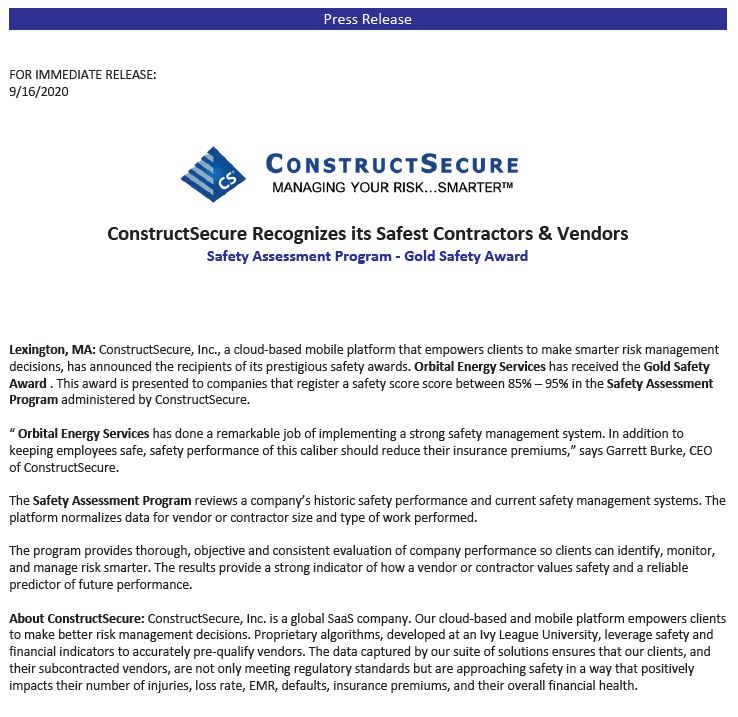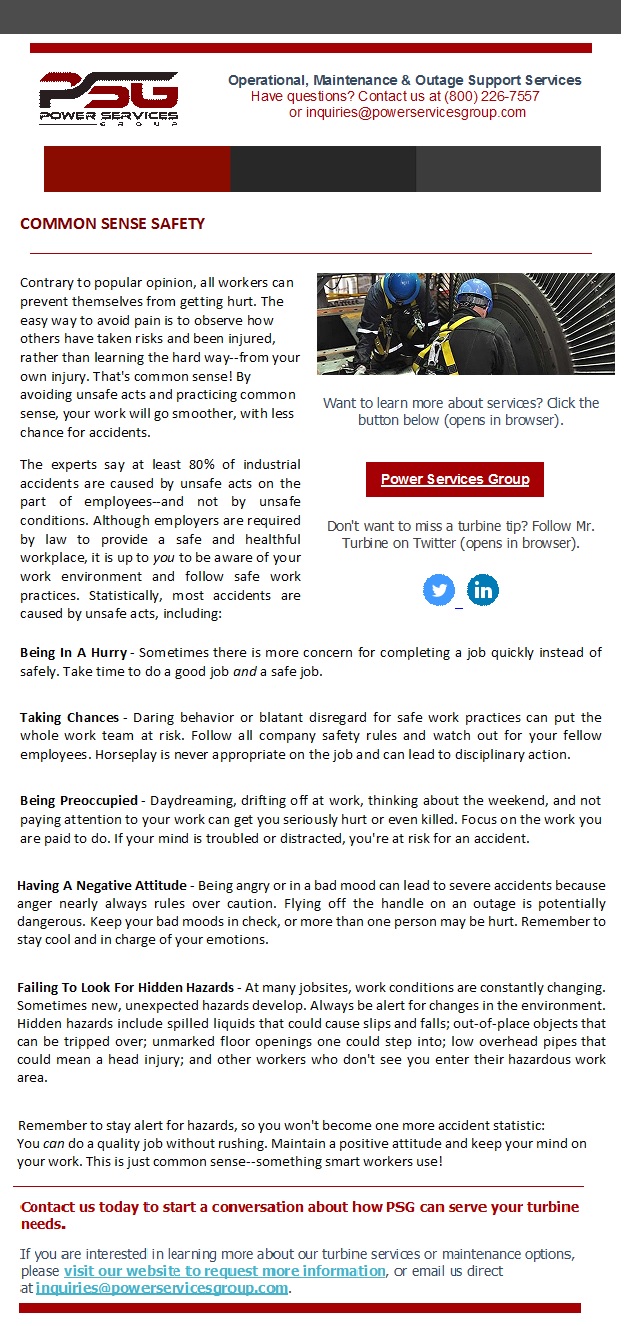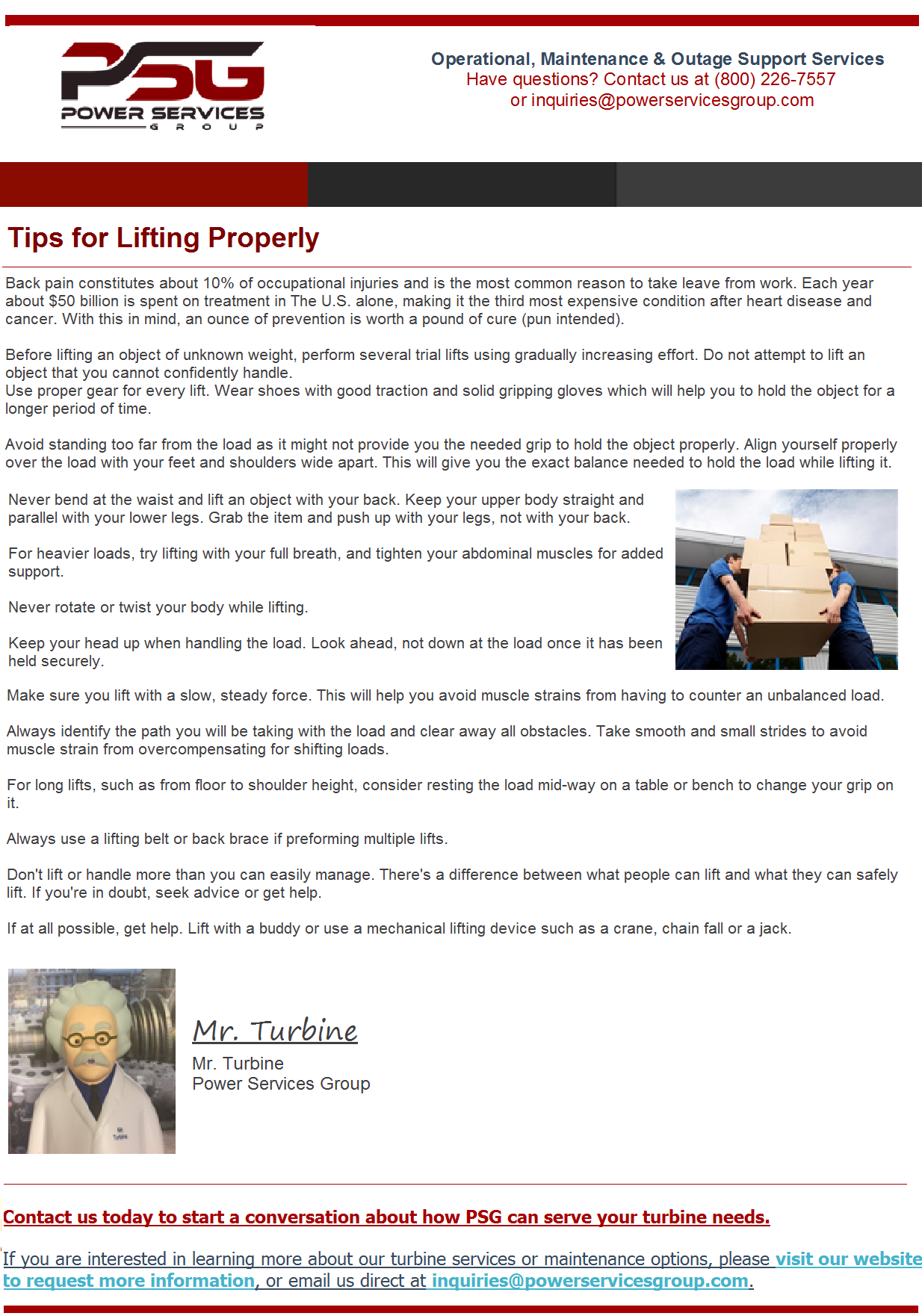National Safety Council – One Million Hours Worked Recognition
/in News, Safety Tips /by Mike.LakeWe were recently recognized by the National Safety Council for our achievement of One Million hours worked without a lost-time injury. This recognition is a reflection of our safety culture and commitment to excellence on each and every project. Since this achievement, we have continued to excel and are currently at 1.875 Million hours worked and have exceeded three years without a lost-time injury. Great job team!
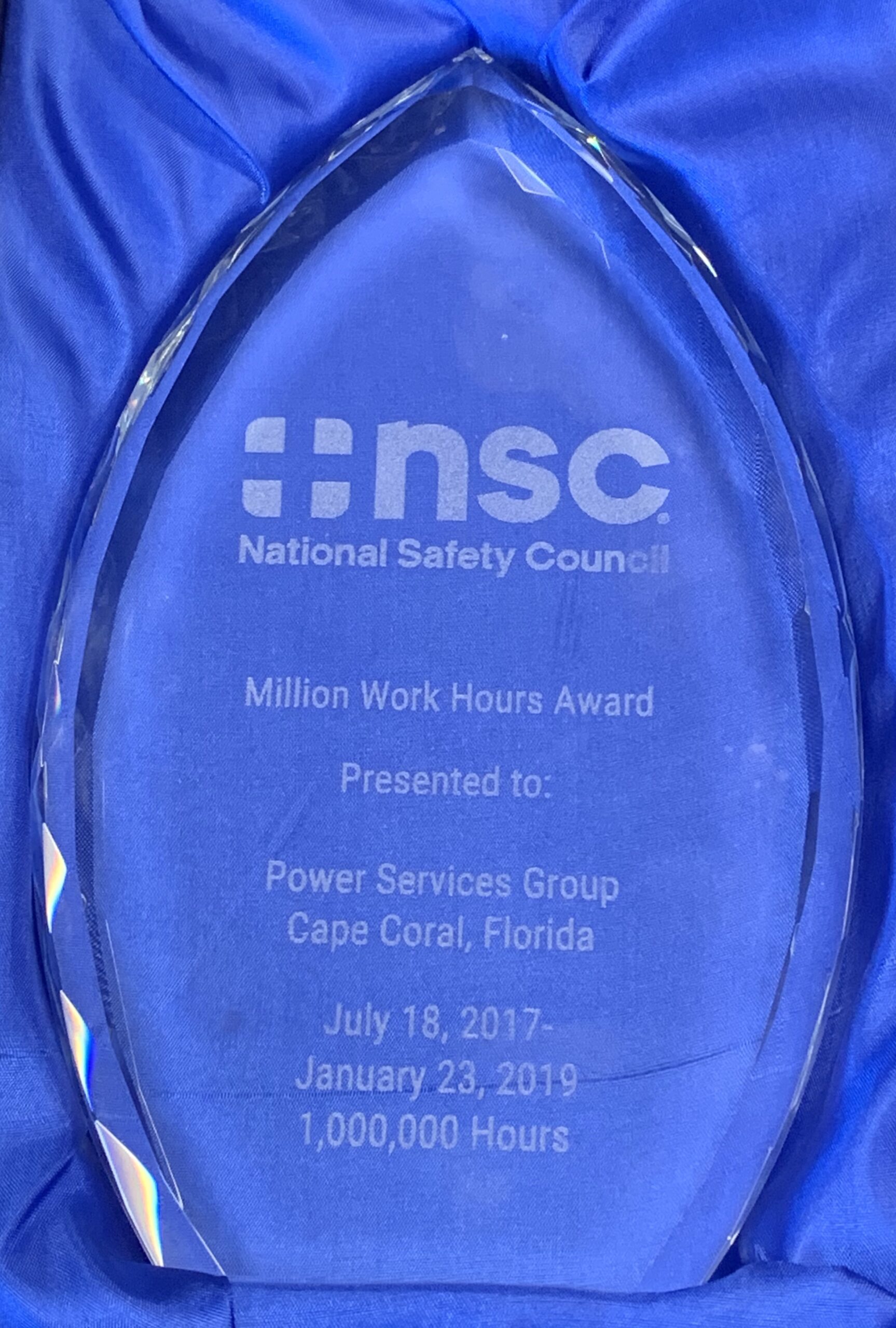
Zero Lost-Time Injuries over the past 3 Years
/in Safety Tips /by Mike.LakeIn July we surpassed 3 years without a lost-time injury. During that time we have logged over 1.85 million hours worked. That is an amazing accomplishment by our project teams, who work in unfamiliar locations as they travel from job to job. The attention to detail and focus on safety must be at the forefront each and every day in order to avoid accidents. Keeping our teams safe has been our priority, and it shows with this accomplishment. Great job to each and every person working in the field – you make this happen!
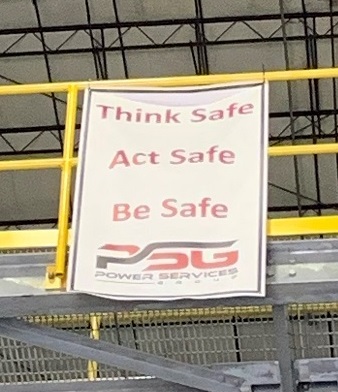
Compressed Air Danger Points
/in Safety Tips /by Mike.Lake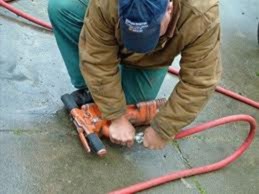 Compressed air is one of the most common shop tools, yet one of the most dangerous. Improper use can maim, blind, or even kill. Always wear eye protection and use face shields when working with air tools.
Compressed air is one of the most common shop tools, yet one of the most dangerous. Improper use can maim, blind, or even kill. Always wear eye protection and use face shields when working with air tools.
Danger Point – Accidental Hose Breach
If a compressed air hose is breached, the escaping pressure snaps the hose like a whip, attacking both personnel and equipment. The released air may contain scale from the fixed lines, or stir up loose material which can be driven into the eye like shrapnel. Protect the hose from cuts and blow-outs by protecting it from sharp and burred objects. Make sure there is plenty of slack at the connector — stress at the connector can weaken the hose and cause a blowout. Protect the hose from foot and vehicle traffic. Prevent kinks by coiling the hose when not in use and never hang it over a nail or hook. Use a broad support, preferably a curved surface.
Danger Point – Connectors
A hose is breached each time you disengage the connector. Proper procedure is to bleed out the pressure before disengaging a hose. Shop air outlets should not be “live” but should include a valve before the connector, and a bleed valve between that valve and the connector. If a bleed valve is not available, release hose pressure through an air ratchet or similar tool. Check to see that connectors are fastened securely. As an added safeguard, attach a positive locking device such as a safety clip or retainer at the source and at the attachment. This is especially important when using vibrating attachments such as chisels on a chipping hammer.
Danger Point – Blow Gun Nozzle
The blow gun attachment is a particularly dangerous tool. The air stream can blow an eye from its socket, and/or rupture an eardrum. Air driven beneath the skin can cause internal hemmorage and intense pain. Air that enters a body opening can burst internal organs and cause slow, agonizing death. Air used to clean surfaces can drive particles into the eye. Never use compressed air to clean off your clothes. Keep air pressure below 30 psi when cleaning surfaces or deep holes. Wear cup-type goggles and set up shields to protect passers-by, and others in the area. Never use air to remove dust – it just ends up in your lungs.
Danger Point – Unsafe Hoses
All hoses eventually wear out. Your hose may be ready to fail if you discover:
When any of these conditions occur, it is good safety sense to immediately remove the hose from service. Once removed, the hose can be carefully inspected and replaced if necessary.
Ask your own safety question by contacting Mr Turbine.
Beat the Heat!
/in Events, Safety Tips /by Mike.LakeIn our industry, working outdoors in all sorts of weather is part of the job. Because you can’t stop working when it gets hot, it’s important to know how to protect yourself from heat and what to do if someone on your crew gets overheated.
There are two main kinds of heat illness – heat stroke and heat exhaustion. Because they require different treatments learn to tell the difference between the two.
A victim of heat stroke has flushed, dry skin; a rapid heartbeat; loud, rapid breathing; and a high body temperature – 105F or more. The victim may complain of dizziness and headache or may suffer from confusion, convulsions, delirium, or unconsciousness. This is a medical emergency calling for quick action. While one person calls for emergency services, others should get the victim cooled off. Place the victim in a tub of cool water or use a hose or wet cloths to bring the temperature down. Massage the victims hands and feet toward the heart to stimulate circulation of the cooler blood of the limbs. Dry the victim off when the temperature returns to normal. Repeat the cooling process if the body temperature rises again.
A victim of heat exhaustion looks very different from a heat stroke victim. This person sweats profusely and has pale, clammy skin. Body temperature is normal. The victim may feel giddy and nervous, or may vomit or faint. First aid for heat exhaustion is to get the victim to lie in a cool place and sip cool water. Loosen the victim’s clothes and call a doctor. A victim who is unconscious or vomiting will need to be taken to a hospital to be treated intravenously.
Heat exhaustion sometimes includes heat cramps. This is caused by a lack of salt. You can relieve the cramps by massaging the cramped muscles or pressing firmly on them with your hands. If the victim has no other medical condition, you can give half a teaspoon of salt dissolved in 8 ounces of cool water or fruit juice.
Heat-related illness is no fun. And it’s usually preventable. Here’s what to do to keep healthy in hot weather:
If you’re not used to working in heat, start out slowly. Drink plenty of water – at least eight ounces (one glass) every 20 – 30 minutes while on the job. Drink a nutrient replenishing sports drink with electrolytes. Avoid alcohol and carbonated drinks, which can cause dehydration and cramps. Cut heavy, high-fat foods out of your diet and get plenty of rest. Pay attention to warning signs – if you don’t feel good take a break.
One more thing – pay attention to each other! You may notice a coworker with flushed skin and rapid breathing before he or she does. And if he or she must go to the hospital, guess who gets to do his work?
Remember: Hazard Awareness + Hazard Mitigation + Focus = Zero Injuries

Over 1000 Days Lost-Time Injury Free!
/in News, Safety Tips /by Mike.Lake
Earlier this month we surpassed 1000 Days without a lost-time injury. That is an amazing accomplishment by our project teams, who work in unfamiliar locations as they travel from job to job. The attention to detail and focus on safety must be at the forefront each and every day in order to avoid accidents. Keeping our teams safe has been our priority, and it shows with this accomplishment. Great job to each and every person working in the field – you make this happen!

Crane Safety
/in News, Safety Tips /by Mike.Lake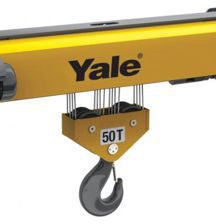 When PSG begins planning for an outage, we ask the customer for a Crane Safety Report complying with OSHA Regulation 29 CFR 1910.179. This is an OSHA compliance issue that PSG feels is well warranted. First, we have a commitment to our employees to keep them safe from harm. A crane malfunction can easily injure, maim or even kill. Second, we have a commitment to our customers to do quality work in the time frame allotted per their work scope. That means the overhead crane needs to be in perfect operational condition in order for PSG to perform the outage safely. A crane malfunction can damage customer property and/or delay operations during repairs.
When PSG begins planning for an outage, we ask the customer for a Crane Safety Report complying with OSHA Regulation 29 CFR 1910.179. This is an OSHA compliance issue that PSG feels is well warranted. First, we have a commitment to our employees to keep them safe from harm. A crane malfunction can easily injure, maim or even kill. Second, we have a commitment to our customers to do quality work in the time frame allotted per their work scope. That means the overhead crane needs to be in perfect operational condition in order for PSG to perform the outage safely. A crane malfunction can damage customer property and/or delay operations during repairs.
Crane safety reports fall into two categories: Frequent and Periodic. Frequent inspections are for cranes that have been idle for a period of 1 month or more, but less than 6 months. This usage pattern necessitates conformance with a minimum set of OSHA requirements. Periodic inspections are for cranes that have been idle for a period of over 6 months. These cranes must be inspected according to more stringent OSHA requirements. Note that the less often the crane is used, the more vital the inspection.
One critical inspection for all cranes is a test of the upper limit switch. This switch is designed to prevent the hook block assembly from contacting the drum assembly. If the block contacts the drum, the hook and block will fall from the maximum height of the crane, dropping whatever load is on that hook. That is a very scary prospect.
To minimize this prospect, the crane operator should keep the block well clear of the limit switch in normal operation. It is a safety device NOT an operational device. And it is just one of the necessary safety requirements which must be verified with the Crane Safety Report.
Safety Bulletin – Chainfalls and Come-Alongs
/in News, Safety Tips /by Mike.Lakeby Shannon Scruggs, PSG Safety Director
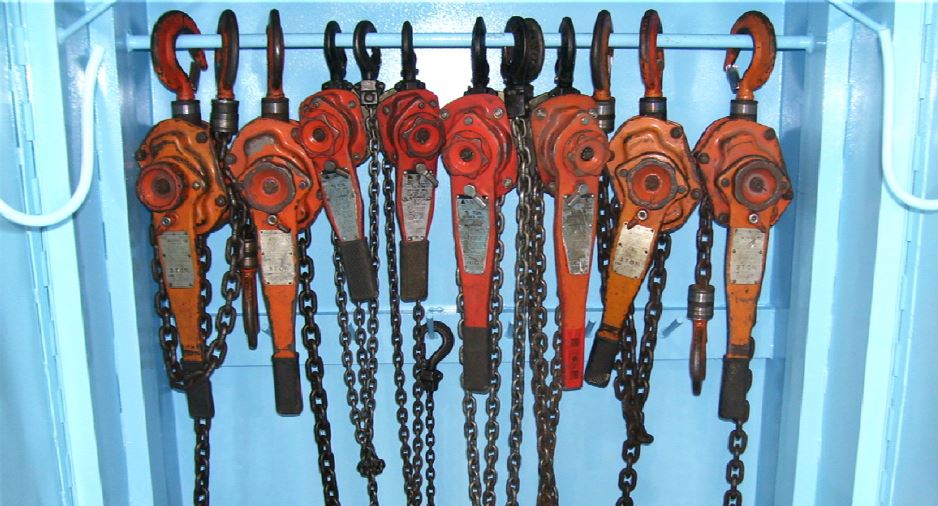
The chainfall and come-along are two very common manual mechanical lifting devices. Both are designed to provide safety to those using them. But they must be used properly if they are to function safely. Remember the following precautions:
1. Always use the proper capacity hoist for the job you are about to do, remembering that two people pulling on the hand chain will increase the amount you can physically lift but will not increase the capacity of the hoist you are using.
2. Inspect the hoist before you begin to lift any load. Check the upper and lower hooks to see that they swivel properly and are in good shape. Check the inspection date on the hoist housing to ensure it has been inspected within the last 12 months.
3. Inspect the full length of chain as much as possible, look for badly gouged, worn or defective links. Make a load test by lifting and lowering a load slightly. This will tell the operator if the unit is functioning properly.
4. Stand completely clear of the load at all times. Allow no portion of your body or a fellow worker’s body under the load.
5. Center the load under the hoist.
6. Always properly seat the load in the hook.
7. Proper care and handling make a safe hoist. Remember the hoist was designed to ease our burden, and carelessness not only endangers the operator, but in many cases, a valuable load. Keep the chain hoists free of dirt and foreign material. Store all hand chain hoists in a hanging position in a clean area.
8. Do not attempt to “fix” a defective chainfall or come-along. Tag it as “defective” and have it returned to the toolroom for repair or disposal.
Treat the hoist properly, respect its limitations and it will work safely for a long time to come.
Remember: Hazard Awareness + Hazard Mitigation + Focus = Zero Injuries
Services at a Glance
Ready to Serve Your Needs
Power Services Group brings you a wide range of services specific to industries like yours, offering exceptional value and responsiveness. We can hit the ground running and deliver results so you can have peace of mind and your equipment is always available.
Contact Us Today
125 SW 3rd Place, Suite 300
Cape Coral, FL 33991
Phone: (800) 226-7557

